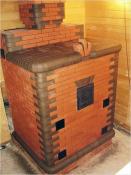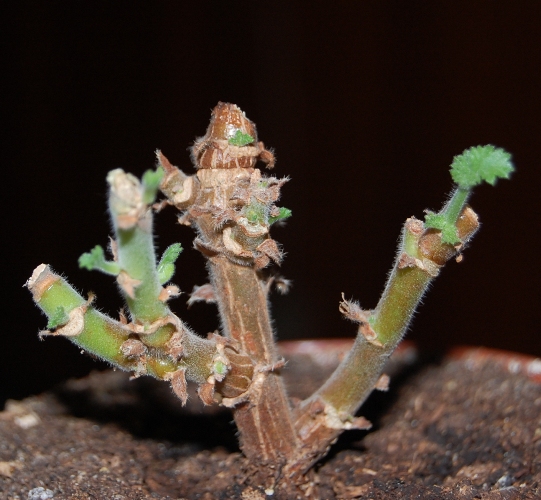Search
Login
Favorite flower - geranium or pelargonium
Pelargonium or fragrant geranium - from ancient times decorated the windows of those houses, the mistresses of which loved flowers, and the comfort of the house.
Content
- General information video
- Pelargonium is zonal
- Pelargonium or cascade geranium (ampelous)
- Variegated leaves of geranium (pelargonium)
- Standard geranium (pelargonium)
- Pelargonium or geranium in the garden video
- Pelargonium (geranium) care
- Propagation of Pelargonium (Geranium)
General information
Civilized Europe, which has long been engaged in floriculture, has been cultivating pelargonium or geranium for at least 300 years.

Breeders during this time from a modest wild flower of South Africa turned geraniums into a lush flowering plant.
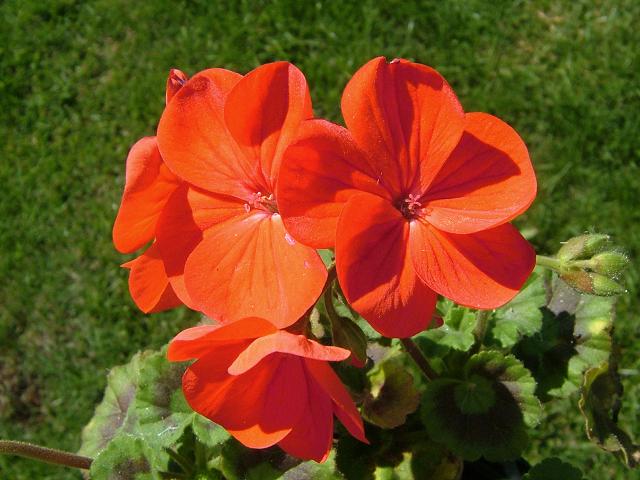
Currently, a huge assortment of geraniums is being grown, not only of various types, but also of a wide variety of colors.
This flower is becoming increasingly popular among gardeners.
Pelargonium is zonal
Varieties of geraniums with erect shoots and dense spherical inflorescences evolved from zonal pelargonium.
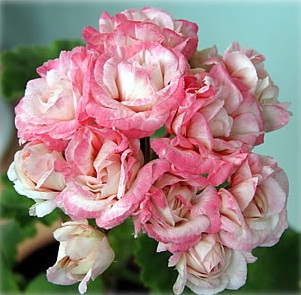
Powerful varieties of zonal pelargonium, such as Schone von grenchen, have been in great demand for many years.
Zonal pelargonium with erect shoots of Salmon Irene can be grown in the form of a spectacular pyramid.
These varieties, belonging to the old guard, have proven themselves in floriculture.
They have almost round, slightly pubescent leaves, the edges of the leaves have recesses, often the leaves have a dark horseshoe-shaped pattern.
Pelargonium or cascade geranium (ampelous)
From pelargonium of the thyroid or ivy - it got this name for smooth leaves and long shoots resembling ivy - breeders have bred new varieties.
New hybrids with drooping shoots form magnificent flower cascades.
Such old varieties as Feur-Cascade and others occupy first places among lovers and constantly decorate balconies and windows.
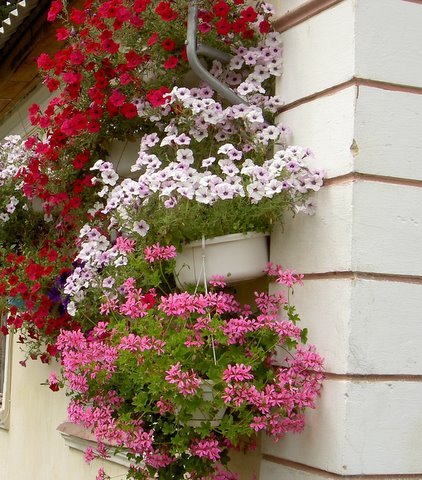
Varieties of geraniums zonal and ivy can be selected with almost any color: white, all shades of pink, purple, salmon, orange to bright red tones, there are varieties with multi-colored corollas.
Variegated leaves of geranium (pelargonium)
Pelargonium variegated, found in the collection of English flower growers as early as the beginning of the eighteenth century. The colorful pattern on the leaves became an additional decoration of some varieties of geranium.

Breeders recycled the old varieties and now the assortment has a new name - Pelgardini, which means decorative leaf pelargonium.
Ornamental geranium flower is a spectacular plant with white, yellow, brown-green or tricolor leaves.
Beautiful inflorescences rise above them. There are varieties of pelargonium with aromas: delicate, sweet or fruity.
Standard geranium (pelargonium)
From the cuttings of pelargonium, you can grow a beautiful tree. To do this, from the apical green stem, rooting it in the ground, planting in the fall - by spring you will get a young plant, transplanting it into a larger pot in early spring.
In June, transplant into a pot with a diameter of 20 centimeters, do not forget to put drainage on the bottom.
Always remove all side shoots and buds until the main shoot reaches the required height of the trunk of the future tree.
Then shorten the side shoots to two pairs of leaves, pinch the top point
After that, the plant will begin to build green mass.
By pinching, form a crown of geranium in the form of a ball. In the third year, your tree will bloom.
Pelargonium or geranium in the garden
Modern varieties of pelargonium, feel great when planting in the garden.
In hanging baskets, geranium varieties that are close to wild-growing forms look interesting (Waldlafe group).
There is a group of shade-tolerant pelargonium.
Landing on the flowerbed of ground cover geraniums of the Saxonia variety is possible.
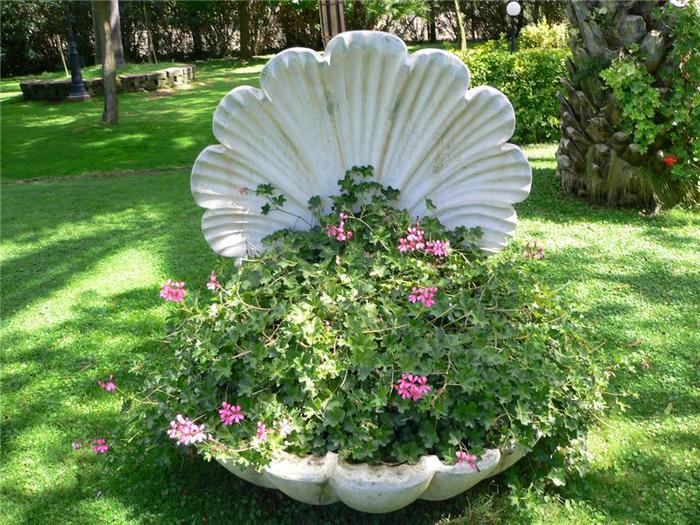
In pots, large-flowered, English pelargoniums will delight you all summer.
This variety has velvety flowers with petals of different shades, collected in dense inflorescences of umbrellas.
Pelargonium pots are well placed in slightly shaded, sheltered from the wind places.

In the summer, expose the pelargonium grown in the form of a tree, a pyramid or a column into the fresh air.
In autumn, do not forget about moving this entire group to a winter garden or to a bright windowsill.
Pelargonium (geranium) care
Strong young plants are planted in containers with good flower soil.

A pot for geranium, it is necessary to take not very large size.
If the pot is large, the geranium begins to increase the mass of leaves, it eats - to the detriment of flowering.
The soil in the pot should be moderately moist, in order to avoid rotting of the roots, good drainage is necessary.
On warm windy days - watered abundantly, about a liter for each plant.
Weekly top dressing with full fertilizer is necessary. Or a single meal, in the form of long-acting fertilizer.
It is necessary to constantly remove wilted flowers and leaves.
In winter, pilargonium plants are well stored in a cool, light room.
Watering is necessary occasionally, but do not allow the coma to dry out.
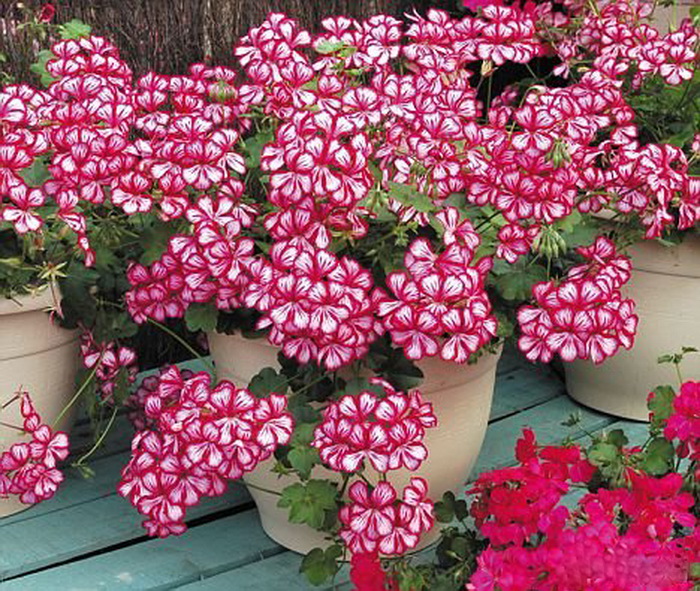
In spring, the plant is tidied up, short, elongated shoots are shortened, transplanted into fresh ground, put into light, warmer rooms.
Pots can be taken outside in mid-May.
As a result of violation of the water regime - on the underside of the leaves of the pelargonium, sometimes green first appear, and later brownish blisters, similar to warts.
Therefore, in bad weather, in order to avoid excessive moisture, it is better to remove pelargonium from the street or cover it with foil.
Propagation of Pelargonium (Geranium)
All pelargoniums - ampelous, fragrant, wild-growing - are easily propagated by cuttings.
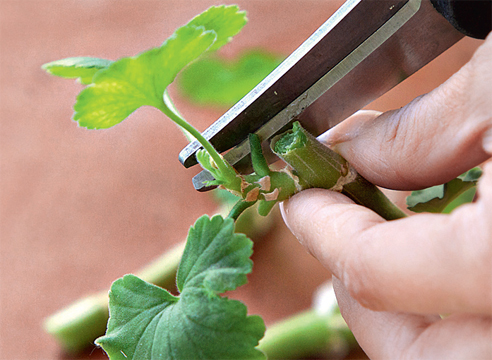
If you have made pelargonium flowering in the fall, young plants will bloom the next year.
Variegated geraniums and fragrant geraniums, young shoots need to be grown in the spring, and then these plants will please you in the summer.

For cuttings with a sharp and clean knife, the tops of several strong and healthy shoots are cut, 8-10 cm long, directly under the bottom pair of leaves.
After such an operation, the uterine plant begins to branch out more densely.
On cut shoots, all leaves are removed, only 3-4 top leaves are left.
Cuttings can be put in a jar of water, they will take root there, after which they are planted in the ground.
In the second method of propagation, cuttings are planted in pots with fresh soil, watered and put in a bright place.
After 3-4 weeks, they will take root and they can be exposed to fresh air.
Pelargoniums can easily be propagated by seeds, having acquired seeds, in accordance with the instructions indicated on the package with seeds, sow the seeds.
